Dominican Gardens & National Parks: Eco-Tour Highlights in 2025
Introduction to Dominican Gardens & National Parks
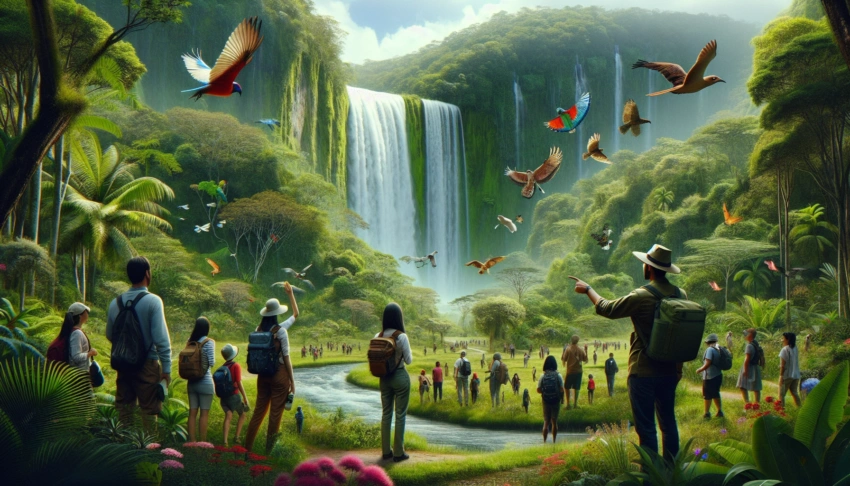
Dominican Gardens & National Parks: Eco-Tour Highlights in 2025
Welcome to a verdant paradise where nature’s artistry is on full display! The Dominican Republic, with its lush gardens and expansive national parks, offers a breathtaking glimpse into the rich biodiversity and ecological wonders of the Caribbean. As eco-tourism blossoms in 2025, these natural sanctuaries are more significant than ever, enticing visitors to explore and conserve.
1. The Rich Biodiversity of the Dominican Republic
The Dominican Republic is a tapestry of vibrant ecosystems, each teeming with unique flora and fauna. From the towering palm trees swaying in the breeze to the delicate orchids that punctuate the landscape, the diversity of plant life here is nothing short of spectacular. The island is home to over 6,000 plant species, including the rare and beautiful Bayahibe Rose, found nowhere else on Earth.
Likewise, the country’s fauna is a wonderland for animal lovers. The lush rainforests and expansive marine parks shelter a myriad of creatures, from the iconic Hispaniolan parrot to the elusive solenodon, a small nocturnal mammal found only in this region. Birdwatchers will delight in spotting the many endemic bird species, such as the Hispaniolan woodpecker and the delicate Hispaniolan trogon.
2. The Importance of Eco-Tourism in 2025
In 2025, eco-tourism is not just a trend; it’s a movement reshaping the Dominican Republic’s economy and conservation efforts. As more travelers opt for sustainable vacations, the demand for eco-friendly tours and accommodations is skyrocketing, providing a much-needed boost to local economies while preserving natural beauty.
Eco-tourism initiatives have become a cornerstone of the country’s strategy to balance economic growth with environmental stewardship. By engaging travelers in conservation activities and promoting awareness of ecological issues, these programs are fostering a new generation of environmentally-conscious visitors. From guided tours that educate on local wildlife to community-led conservation projects, the Dominican Republic is setting a benchmark for sustainable tourism in the Caribbean.
3. Sustainable Travel: A Growing Trend
As the world becomes more aware of its environmental impact, sustainable travel is gaining traction among conscientious tourists. In the Dominican Republic, this trend is reflected in the increasing number of visitors choosing eco-friendly practices. Whether it’s opting for eco-lodges that utilize renewable energy or participating in beach clean-ups, travelers are taking proactive steps to minimize their footprint.
The country’s dedication to sustainability is evident in its efforts to protect natural habitats while allowing visitors to experience their splendor. Initiatives like reforestation projects and marine conservation programs are not only preserving biodiversity but also enhancing the visitor experience by ensuring these beautiful landscapes remain unspoiled for future generations. With every step taken towards sustainability, the Dominican Republic reaffirms its commitment to being a leader in eco-tourism.
So pack your bags, embrace the call of the wild, and embark on an unforgettable journey through the Dominican Republic’s gardens and parks. Your adventure awaits in this tropical haven where nature and conservation go hand in hand!
Top Dominican Gardens to Visit
The Dominican Republic is a treasure trove of stunning gardens that not only showcase the country’s rich biodiversity but also serve as sanctuaries for ecological preservation. In 2025, these gardens are more accessible and spectacular than ever, inviting nature enthusiasts to explore their beauty and significance.
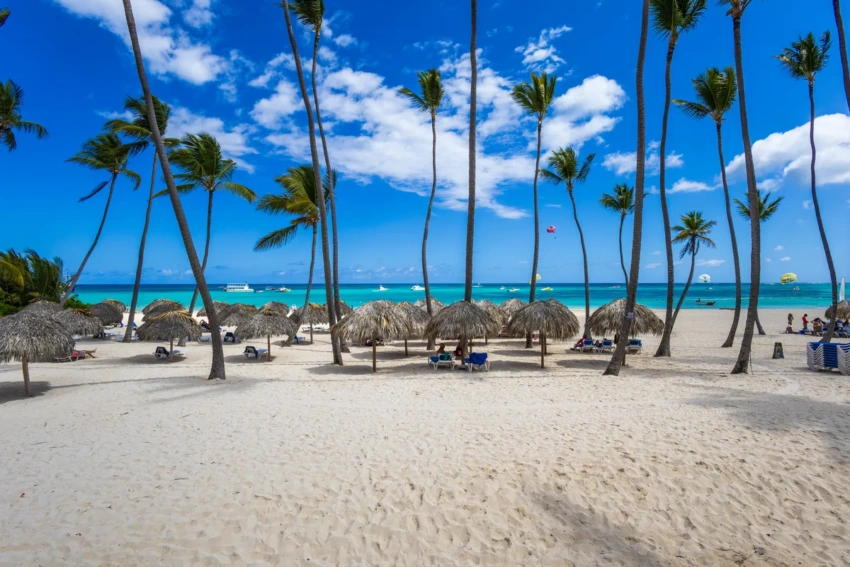
Punta Cana
1. National Botanical Garden of Santo Domingo
The National Botanical Garden of Santo Domingo is a sprawling oasis in the heart of the bustling capital city. As the largest botanical garden in the Caribbean, it covers an impressive 400 acres and features a variety of ecosystems that represent the rich diversity of the Dominican Republic. Visitors can wander through meticulously maintained pathways that lead to spectacular displays of native plants, including the exotic palm collection and the serene Japanese Garden.
One of the garden’s standout features is its extensive orchid collection, which is a must-see for flower enthusiasts. The garden also plays a crucial role in conservation efforts, acting as a research hub for the preservation of endangered plant species and providing educational programs for visitors. Don’t miss the chance to ride the garden train for an informative and relaxing tour of this natural wonder.
2. Jardín Botánico de Santiago
Located in the vibrant city of Santiago, the Jardín Botánico de Santiago offers a unique blend of natural beauty and conservation excellence. This garden, though smaller than its Santo Domingo counterpart, is renowned for its dedication to sustainability and community involvement. It hosts a variety of themed gardens, including medicinal plants and endemic species, which provide insight into the island’s natural heritage.
Visitors can enjoy guided tours that focus on the garden’s conservation projects, which aim to protect native flora and educate the public about the importance of biodiversity. The garden also hosts workshops and events throughout the year, making it a lively center for environmental learning and appreciation.
3. Hidden Gems: Lesser-Known Gardens
While the big names often steal the spotlight, the Dominican Republic is home to several lesser-known gardens that offer a more intimate experience with nature. These hidden gems include the La Vega Botanical Garden, nestled in the lush landscapes of La Vega province. This charming garden is a haven for birdwatchers, offering a peaceful setting to observe a variety of avian species in their natural habitat.
Another delightful spot is the Garden of the Butterflies in Salcedo, where visitors can immerse themselves in the fascinating world of these colorful insects. The garden is dedicated to the conservation of native butterfly species and provides educational programs to raise awareness about their ecological significance.
Our Best Tours in Punta Cana
For those eager to explore these gardens, we offer exclusive tours that highlight the natural beauty and ecological importance of these destinations. Embark on a journey that combines adventure with education, allowing you to connect with nature while learning about the Dominican Republic’s efforts in conservation and sustainability.
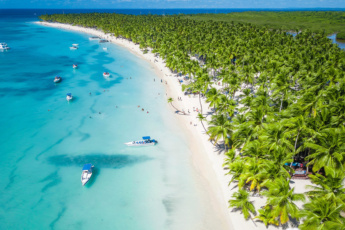
Saona Island Excursion - Caribbean Paradise
from $75 Read more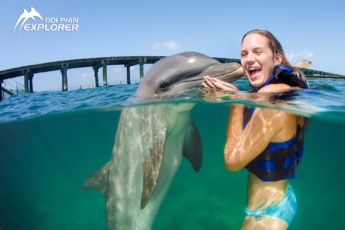
Swimming with Dolphins in Punta Cana - Top Adventure 2025 (50 minutes)
from $149 Read moreThese gardens are more than just places to visit; they are vibrant ecosystems that play a crucial role in the country’s environmental conservation efforts. By exploring these natural wonders, visitors engage with the Dominican Republic’s rich biodiversity and contribute to its preservation.
Exploring National Parks: A Natural Adventure
The Dominican Republic is a treasure trove of natural wonders, offering breathtaking national parks that promise an unforgettable adventure for nature lovers. Whether you’re seeking to discover vibrant marine life, trek majestic peaks, or explore lush mangroves, the national parks here are designed to captivate your senses and invigorate your spirit.
1. Parque Nacional del Este
Discovering Parque Nacional del Este is akin to stepping into a vibrant world of diverse ecosystems. Located in the southeastern part of the Dominican Republic, this national park is renowned for its pristine beaches, lush rainforests, and rich biodiversity. The park spans over 310 square miles and includes the Saona Island, a popular destination for its turquoise waters and white sandy beaches.
Marine enthusiasts will delight in the park’s underwater treasures, where snorkeling and diving reveal colorful coral reefs teeming with life. The park is home to over 112 species of birds, including the rare Ridgway’s hawk, making it a birdwatcher’s paradise. Visitors can also explore the park’s archaeological sites, which provide a glimpse into the region’s pre-Columbian history.
2. Pico Duarte and the Cordillera Central
For those with an adventurous spirit and a love for heights, Pico Duarte offers an exhilarating challenge. Standing at 10,164 feet, it is the tallest peak in the Caribbean, nestled within the stunning Cordillera Central mountain range. This trek is not for the faint-hearted, but the reward is a breathtaking panorama of lush valleys, rugged terrain, and cloud-kissed peaks.
The journey to the summit can take two to three days and leads through diverse ecosystems, from cloud forests to pine forests, each offering a unique perspective of the island’s natural beauty. Trekkers are advised to prepare adequately and consider hiring a local guide for a safe and insightful experience.
3. Los Haitises National Park
Los Haitises National Park is a haven for those who crave a closer connection with nature. Located in the northeastern part of the island, this park is characterized by its dramatic karst landscapes, dense mangroves, and intricate cave systems adorned with ancient Taino petroglyphs.
The park’s lush mangroves are a sanctuary for a myriad of wildlife, including the endangered manatee and a variety of bird species such as the brown pelican and frigatebird. Boat tours are a popular way to navigate the park’s waterways, offering an intimate view of its natural beauty and ecological significance. For birdwatchers, Los Haitises is an unrivaled destination with opportunities to spot some of the rarest avian species in the Caribbean.
With each visit to these breathtaking national parks, travelers contribute to the conservation efforts that ensure these natural wonders remain pristine for generations to come.
Innovative Eco-Tourism Experiences
In 2025, the Dominican Republic is taking eco-tourism to exhilarating new heights, offering travelers a chance to immerse themselves in nature while minimizing their environmental footprint. With innovative experiences ranging from immersive eco-lodges to guided eco-tours and interactive conservation activities, it’s an adventure that promises to be unforgettable.
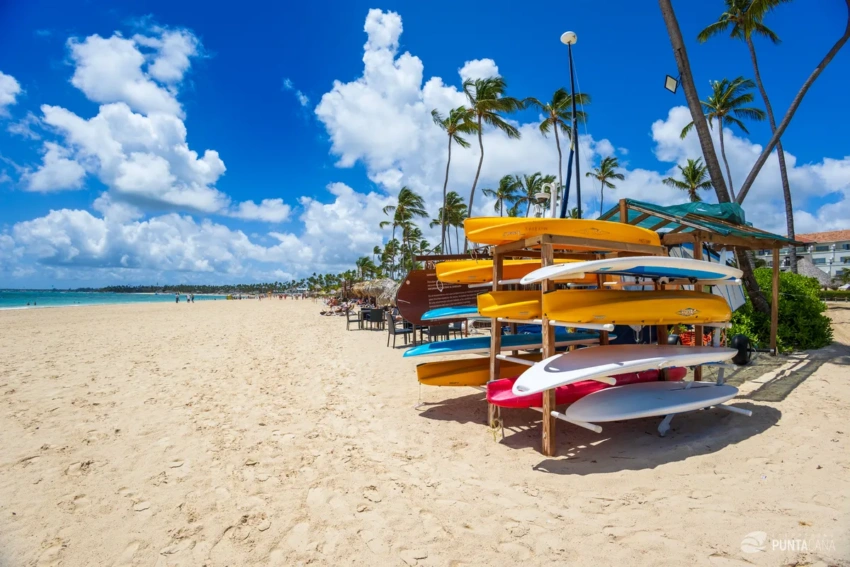
Punta Cana
1. Eco-Lodges and Sustainable Accommodations
Imagine waking up to the sounds of tropical birds and the gentle rustle of leaves in an eco-lodge that seamlessly blends with its natural surroundings. In 2025, eco-lodges in the Dominican Republic are not just a place to stay—they’re an integral part of the eco-tourism experience.
These accommodations are designed with sustainability at their core. From solar-powered energy systems to rainwater harvesting and organic gardens that supply fresh produce, eco-lodges are making significant strides in reducing their environmental impact. Notable examples include the Treehouse Village in Samana, where guests can stay in elevated treehouses amidst lush rainforests, and the Eco-Haven in Punta Cana, known for its commitment to renewable energy and local craftsmanship.
For those seeking a more immersive experience, many eco-lodges offer workshops and activities focused on sustainability and conservation, allowing guests to learn about and contribute to local environmental efforts.
2. Guided Eco-Tours: What to Expect
Guided eco-tours in the Dominican Republic are crafted to offer travelers a deeper understanding of the region’s natural beauty and ecological importance. These tours are not just about sightseeing; they’re educational journeys led by knowledgeable guides passionate about conservation.
Expect to explore diverse ecosystems, from the coastal mangroves of Los Haitises National Park to the cloud forests of the Cordillera Central. Tours often include opportunities to observe native wildlife, learn about endemic plant species, and understand the delicate balance of these ecosystems.
Many tours also incorporate cultural elements, such as visits to local communities where travelers can engage with residents and learn about traditional practices that contribute to sustainable living. Whether you’re kayaking through serene waters or hiking through verdant trails, these tours provide a unique perspective on the Dominican Republic’s natural wonders.
Our Best Tours in Punta Cana
Ready to experience the Dominican Republic’s natural beauty firsthand? Check out our top tours available for booking. These curated experiences promise not only breathtaking sights but also a commitment to sustainability.
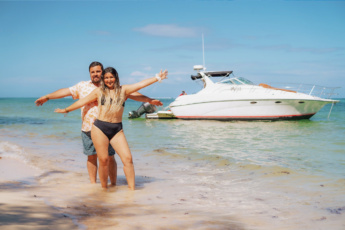
Punta Cana Private Boat Trip at the Best Price - 3-Hour Exclusive Tour with Snorkeling (from Jellyfish to Cabeza de Toro)
from $590 Read more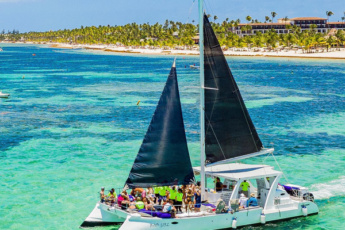
Power Cruise – Punta Cana Party Experience on the Bad Girl Catamaran
from $65 Read more3. Interactive Conservation Activities
For those eager to roll up their sleeves and get involved, the Dominican Republic offers a range of interactive conservation activities. These experiences allow tourists to contribute directly to preservation efforts, making their travel both meaningful and impactful.
One popular activity is participating in reforestation projects. Visitors can help plant native trees in areas that have suffered from deforestation, supporting reforestation initiatives that aim to restore biodiversity and combat climate change. Another engaging option is beach clean-ups, where tourists can join local groups in removing litter and debris from the beautiful coastlines, ensuring the preservation of marine habitats.
Many parks and reserves also offer citizen science programs, where travelers can assist researchers in collecting data on wildlife populations or plant health. These hands-on activities not only enhance the travel experience but also play a vital role in ongoing conservation efforts.
By choosing these innovative eco-tourism experiences, travelers can enjoy the stunning landscapes of the Dominican Republic while actively contributing to its preservation. It’s a win-win scenario that leaves a lasting impact on both the visitor and the environment.
Conservation Efforts and Initiatives
The Dominican Republic is not just a paradise for sun-seekers and adventurers; it’s also a haven for conservation enthusiasts. Discover the unyielding dedication to preserving this Caribbean gem’s natural wonders through dynamic conservation efforts and initiatives.
1. Government and NGO Partnerships
Collaboration is the cornerstone of effective conservation strategies in the Dominican Republic. The government has joined forces with various NGOs to spearhead initiatives that protect the nation’s rich biodiversity. These partnerships are essential for pooling resources, sharing expertise, and implementing innovative conservation techniques that ensure the sustainability of natural habitats.
One notable collaboration involves the Ministry of Environment and Natural Resources and the Nature Conservancy. Together, they work on projects such as reforestation and marine conservation, focusing on critical areas like the Sierra de Bahoruco National Park and the coral reefs surrounding the island. These projects aim to restore ecosystems, providing a healthier environment for native species to thrive.
2. Community Involvement in Conservation
Empowering local communities is a strategic move in the conservation playbook, ensuring that those who live closest to the land are its fiercest protectors.
Community involvement is pivotal in successful conservation efforts. Many Dominican conservation projects are designed to include local communities, providing education and economic incentives to protect their natural surroundings. Initiatives such as community-led forest management programs have emerged, allowing locals to take charge of reforestation and sustainable land use.
Education plays a crucial role, with programs aimed at schools and community groups to foster a culture of conservation from a young age. These initiatives not only empower locals but also create a sense of ownership and pride in their natural environment, ensuring that future generations remain committed to conservation efforts.
3. Future Goals for Biodiversity Preservation
The Dominican Republic has set ambitious targets for biodiversity preservation, focusing on both immediate and long-term goals. By 2025, the aim is to expand protected areas to cover 30% of the country’s land and marine territories, aligning with global conservation targets. This expansion includes efforts to create biological corridors that connect existing protected areas, allowing species to migrate and maintain genetic diversity.
Furthermore, conservationists are keen on enhancing the resilience of ecosystems to climate change. Initiatives are underway to restore mangroves and coral reefs, which act as natural buffers against storms and rising sea levels. Innovative approaches such as coral gardening and mangrove rehabilitation are being implemented to bolster these vital ecosystems.
Key Conservation Initiatives and Their Impact
| Initiative | Lead Organization | Objective | Impact |
|---|---|---|---|
| Reforestation Projects | Nature Conservancy & Local NGOs | Restore forest areas | Increased biodiversity, reduced soil erosion |
| Marine Conservation | Ministry of Environment | Protect coral reefs | Improved reef health, boosted fish populations |
| Community-Based Conservation | Local Communities & NGOs | Empower local stewardship | Greater community involvement, sustainable practices |
As the Dominican Republic strides forward in its conservation journey, the nation remains a beacon for sustainable practices and a testament to the power of collective efforts in preserving our planet’s natural beauty.
Travel Tips for Eco-Conscious Visitors
Embarking on an eco-tour in the Dominican Republic not only promises breathtaking experiences but also presents an opportunity to protect and preserve the natural beauty of this Caribbean gem. Here are some savvy travel tips to help you become a more eco-conscious visitor.
1. Packing Essentials for Eco-Tourists
Packing for an eco-tour can be a fun challenge, ensuring that every item in your suitcase contributes to a sustainable adventure. Biodegradable toiletries are a must-have. These include soaps, shampoos, and detergents that break down naturally without harming the environment. Opt for sunscreen that’s reef-safe to protect the delicate marine ecosystems when snorkeling or swimming.
Consider packing reusable items like a water bottle or a set of travel utensils. This not only reduces plastic waste but also saves you money in the long run. Another eco-friendly tip is to bring a lightweight, reusable shopping bag. It’s perfect for carrying souvenirs from local markets and avoiding single-use plastic bags.
2. Best Practices for Responsible Tourism
A responsible traveler respects both nature and culture. One of the golden rules is to leave no trace—this means carrying out whatever you carry in. Ensure you dispose of waste properly, and if you can’t find a recycling bin, take your recyclables with you until you do.
When visiting national parks or gardens, stick to marked paths and trails to avoid disturbing wildlife habitats. Remember, feeding wildlife can disrupt their natural diet and behavior, leading to dependency on human food.
Engage with the culture by learning a few phrases in Spanish—the locals will appreciate your effort. Participating in cultural events or supporting local artisans helps preserve the rich heritage of the Dominican Republic.
Our Best Tours in Punta Cana
As you embrace your eco-conscious journey, don’t miss out on our curated tours that highlight the natural and cultural wonders of Punta Cana. These tours are designed to leave minimal environmental impact while maximizing your experience.
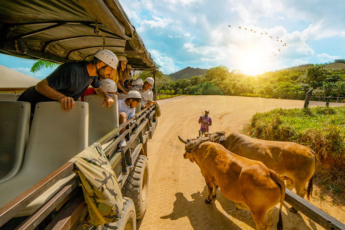
La Hacienda Park - 7-in-1 Adventures Tour in Bávaro, Punta Cana
from $99 Read more
Scape Park in Punta Cana - Full Admission
from $129 Read more3. Supporting Local Eco-Friendly Businesses
Supporting businesses that prioritize sustainability is a powerful way to make a positive impact. Look for accommodations that have green certifications or eco-labels, which signify their commitment to environmentally friendly practices. Many eco-lodges in the Dominican Republic use renewable energy sources and employ waste-reduction techniques.
Dining at restaurants that source ingredients locally not only ensures freshness but also supports the local economy. When shopping, choose fair-trade products or handicrafts made by local artisans. This not only provides income for local communities but also reduces the carbon footprint associated with importing goods.
By following these tips, you can enjoy the stunning landscapes and vibrant culture of the Dominican Republic while ensuring a better future for its ecosystems and communities.
Frequently Asked Questions
What are the must-visit national parks in the Dominican Republic for 2025 eco-tours?
In 2025, some of the must-visit national parks in the Dominican Republic include Los Haitises National Park, known for its stunning limestone karsts and mangrove forests; Jaragua National Park, home to diverse wildlife and beautiful beaches; and Pico Duarte, the highest peak in the Caribbean, offering breathtaking hiking opportunities.
Are there any new eco-tour highlights planned for 2025 in Dominican gardens or parks?
Yes, in 2025, there are plans to introduce new eco-friendly trails and guided tours in several parks, focusing on sustainable tourism and wildlife conservation efforts. These tours aim to educate visitors on the importance of preserving natural habitats.
What should I pack for an eco-tour in Dominican gardens and national parks?
For an eco-tour in Dominican gardens and national parks, it is advisable to pack light, breathable clothing, sturdy hiking boots, a hat, sunscreen, insect repellent, a refillable water bottle, and a camera to capture the stunning scenery.
Is it safe to visit Dominican national parks in 2025?
Yes, visiting Dominican national parks is generally safe. However, it is essential to follow park guidelines, stay on marked trails, and consider hiring a local guide for your safety and to enhance your experience. Always check for any travel advisories before your trip.
What eco-friendly accommodations are available near Dominican national parks?
There are several eco-friendly accommodations near Dominican national parks, including eco-lodges and sustainable resorts that prioritize minimal environmental impact and offer amenities like solar power and rainwater harvesting. Booking in advance is recommended due to high demand.
How can I ensure my visit to the Dominican Republic is environmentally responsible?
To ensure an environmentally responsible visit, choose eco-friendly accommodations, support local conservation projects, reduce waste by bringing reusable items, and respect wildlife and natural habitats by following park regulations.
What wildlife can I expect to see in Dominican national parks during an eco-tour?
During an eco-tour, you can expect to see a variety of wildlife, including endemic birds like the Hispaniolan parrot, reptiles such as iguanas, and marine life in coastal parks. Each park offers unique opportunities to observe different species.
Are there any cultural experiences included in eco-tours of Dominican gardens and parks?
Yes, many eco-tours incorporate cultural experiences, such as visits to local communities where you can learn about traditional practices, enjoy local cuisine, and understand the cultural significance of the natural surroundings.
